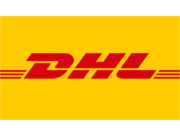About the course:
Our instructor-led Microservices with Docker training course will give you hands-on experience designing and creating flexible and scalable services for your enterprise applications using this cornerstone containerisation technology platform.
You'll learn how to plan, build and implement streamlined services, in the form of lightweight containers which will allow you to modularise an otherwise monolithic architecture and take a more Agile approach to your enterprise / deployment architecture.
The course is suitable for all comers, with example code available to demonstrate microservices built on Java, Node.js, GoLang, and .NET Core. We'll cover software installation during the course so you just need to bring yourself and your laptop and an absorbent mind.
Does your whole team need to gain experience of designing and managing your microservices architecture? We would love to discuss your requirements as an in-house / remote training course might be the best option. Whether you are deploying in the cloud and / or on-premises, we can can take into account your tech stack, use cases and business domain in order to deliver a cost-effective and highly relevant tailored course. Get in touch to find out more.
Trusted by:







